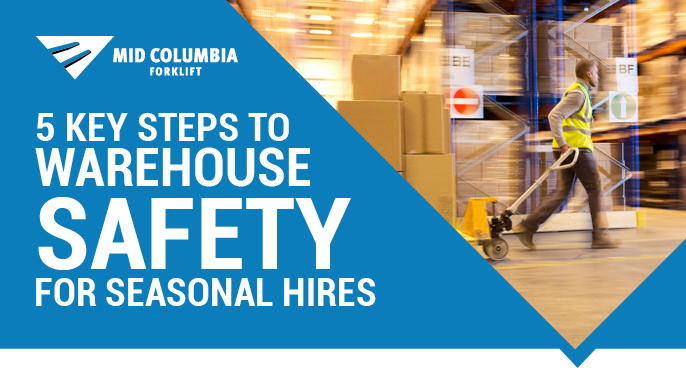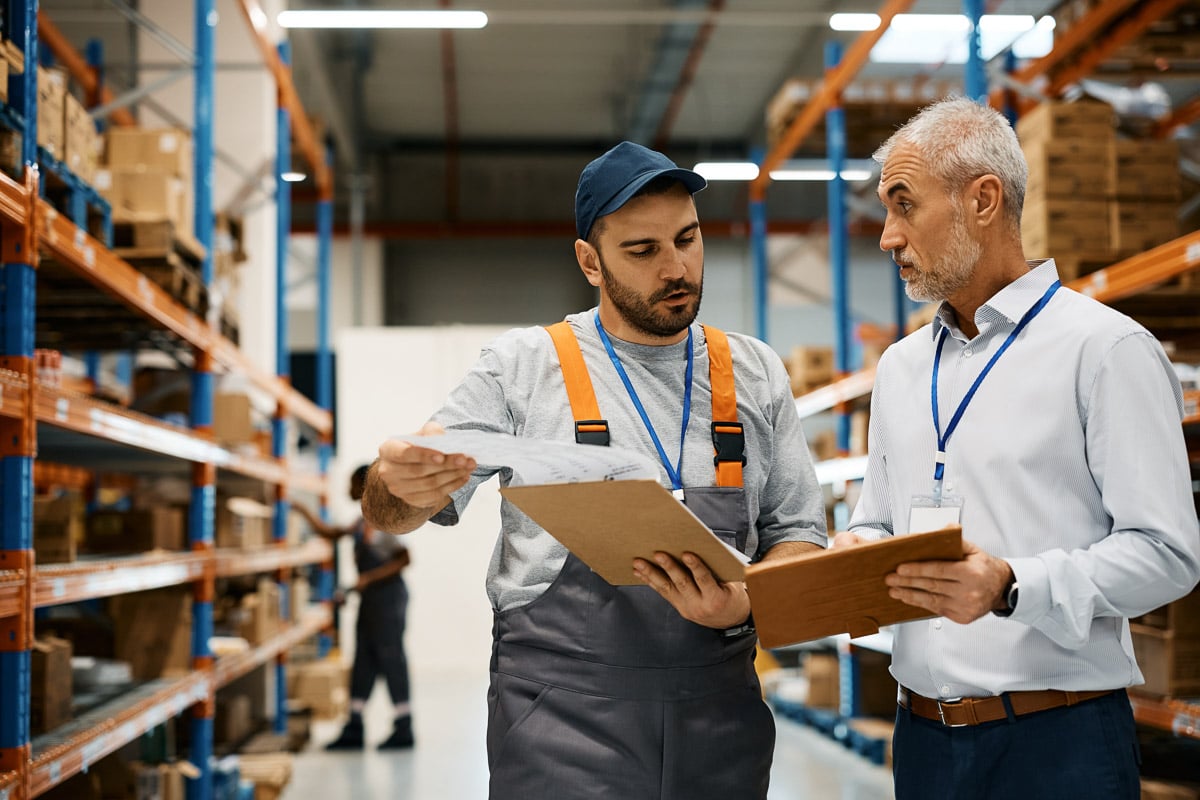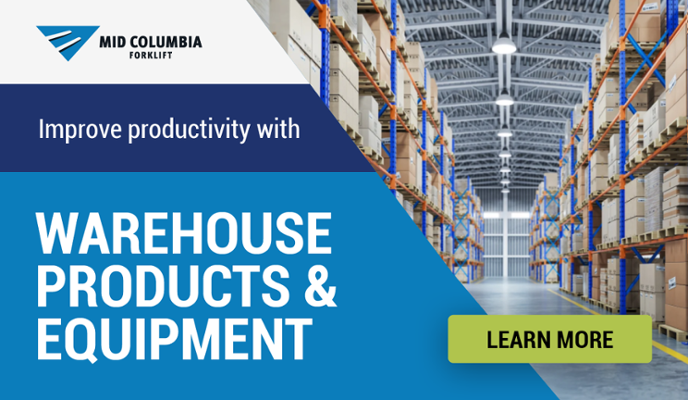5 Key Steps to Warehouse Safety for Seasonal Hires During Peak Seasons
by Oskar Martinez, on December 15, 2023 at 6:39 AM
 Your facility is under extreme pressure during the holiday season. According to the National Retail Federation, November and December account for 20% of annual sales for most companies. With two months to complete a fifth of your business for the year, many organizations need additional help. Temporary hires make up the difference but pose a serious safety concern. Read on to learn the five vital steps to keep your seasonal hires safe.
Your facility is under extreme pressure during the holiday season. According to the National Retail Federation, November and December account for 20% of annual sales for most companies. With two months to complete a fifth of your business for the year, many organizations need additional help. Temporary hires make up the difference but pose a serious safety concern. Read on to learn the five vital steps to keep your seasonal hires safe.
Temporary workers are four times more likely to be involved in an accident during the first month of their employment. They are also 50% more likely to be seriously injured or killed at work. The fast-paced environment of the season influences these statistics but also makes seasonal hiring a necessity. However, there are steps you can take to keep your new help safe and prevent your facility from becoming another holiday statistic.
1. Establish a Baseline
A sad fact of the job market is sometimes people misrepresent themselves on their resumes. Indeed.com estimates that 40% of employees have either included misleading information or an outright lie on a resume. This can put your team in a tough spot.
To keep half-truths from impacting the safety of your facility, you must establish a baseline for each seasonal hire. This baseline is a combination of verifying certifications and assessing current operational skills. Taking the time to complete these steps is crucial to determining what further training your new employee needs to work safely within your facility.
2. Provide Comprehensive Safety Training
As the employer, you are responsible for ensuring each team member has the training necessary to work safely. If you find seasonal hires through a staffing agency, your new team member should arrive with some basic training. The Washington State Department of Labor & Industries requires the staffing agency to provide general safety training to employees. They must document this training and forward the contents to you, the employer.
Then, you must provide training related to worksite-specific hazards. However, you should plan to review basic safety training and fill any gaps that appear while establishing a new employee’s baseline. When in doubt, over-train for safety.
When it comes to warehouse safety training, we can help. Mid Columbia Forklift offers a forklift operator safety course. This training ensures your seasonal workers have the skills to keep your facility safe.
3. Create a Safe Work Environment
OSHA requires employers to provide a safe work environment to all their employees. However, no facility can be made 100% risk-free. Temporary hires often lack the experience that helps your team identify hazards and avoid them. Training, like a warehouse pedestrian safety course, helps them spot dangers but does not replace practical experience.
Safety equipment can reduce existing hazards and help fill the gaps where inexperience might result in an accident. Forklifts, for example, present a common hazard in busy facilities. Installing work lights and blue LED safety lights can reduce the risk of injury. Risk can be further reduced by installing a pedestrian monitoring system like the Toyota SEnS on your forklifts. Safety Equipment like this helps reduce the possibility of human error resulting in a catastrophic accident.
Your staff must be trained on new equipment to use it effectively. In addition to being your source for safety equipment, Mid Columbia Forklift also offers OSHA warehouse training to ensure your new and current staff know how to use the safety equipment that keeps your facility OSHA compliant.
4. Monitor for Best Practices
Any new hire is often subject to conflicting demands. During warehouse safety training, they are taught best practices to keep themselves and their colleagues safe. However, daily demands for high productivity can lead to seasonal hires cutting corners. Adequate monitoring and supervision are critical to ensuring temporary staff don’t let their eagerness to produce override their warehouse safety course.

Maintain a physical presence in your team's work areas. Walk the floor to observe how employees operate throughout the day and check essential documentation for accuracy and completeness. Utilize remote supervision methods such as CCTV and forklift telemetrics to track seasonal hires and ensure they maintain the safety standards taught in their warehouse safety training.
5. Leverage Your Material Handling Partner
The holiday season puts everyone on your team under a lot of pressure, and you are no exception. The dueling desire for a safe facility and productive new hires can make worker safety a balancing act. That’s where Mid Columbia Forklift can help.
As your material handling partner, we offer more than just industrial equipment. Our team provides the comprehensive expertise you need to select the safety equipment your facility needs and the warehouse safety course seasonal hires need to keep your facility up and running. To learn more about how to keep your seasonal hires safe or to inquire about the training we offer, contact us online or visit your local Mid Columbia Forklift.
Auburn 253-854-5438
Pasco 509-547-7413
Wenatchee 509-663-9009
Yakima 509-457-5137
Further Reading
The 3 Steps to Improve Forklift Pedestrian Safety in Your Warehouse
7 Little Accessories That Make a Big Difference in Forklift Safety
Why SEnS Is the Best Collision Avoidance System for Toyota Forklifts





